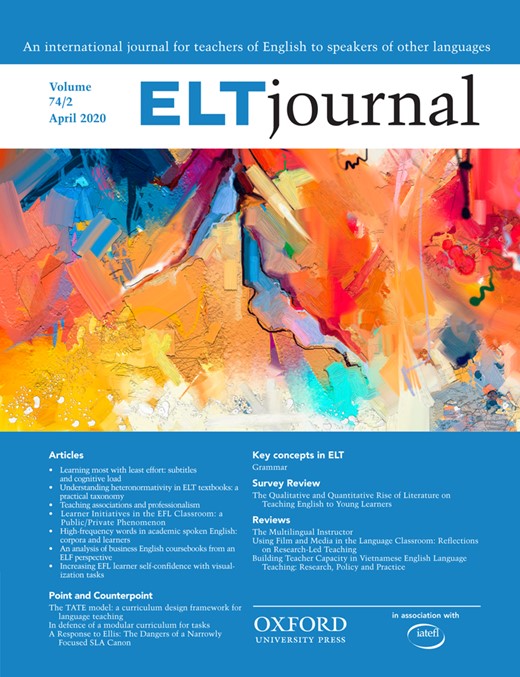-
Views
-
Cite
Cite
Rod Ellis, In defence of a modular curriculum for tasks, ELT Journal, Volume 74, Issue 2, April 2020, Pages 185–194, https://doi.org/10.1093/elt/ccaa015
Close - Share Icon Share
Abstract
In this article, I start by distinguishing two approaches to the design of a language curriculum: the structural approach and the task-based approach. I then present my views relating to three key question: Is one approach superior to the other? When implemented, do these approaches result in different classroom processes? Are there advantages in combining the two approaches? I argue that the evidence points to the superiority of a task-based approach, that prior explicit instruction can have a deleterious effect on the performance of tasks and that a curriculum that combines the two approaches is preferable. I conclude by pointing out the flexibility of a modular curriculum that makes it well suited to a variety of instructional contexts.



